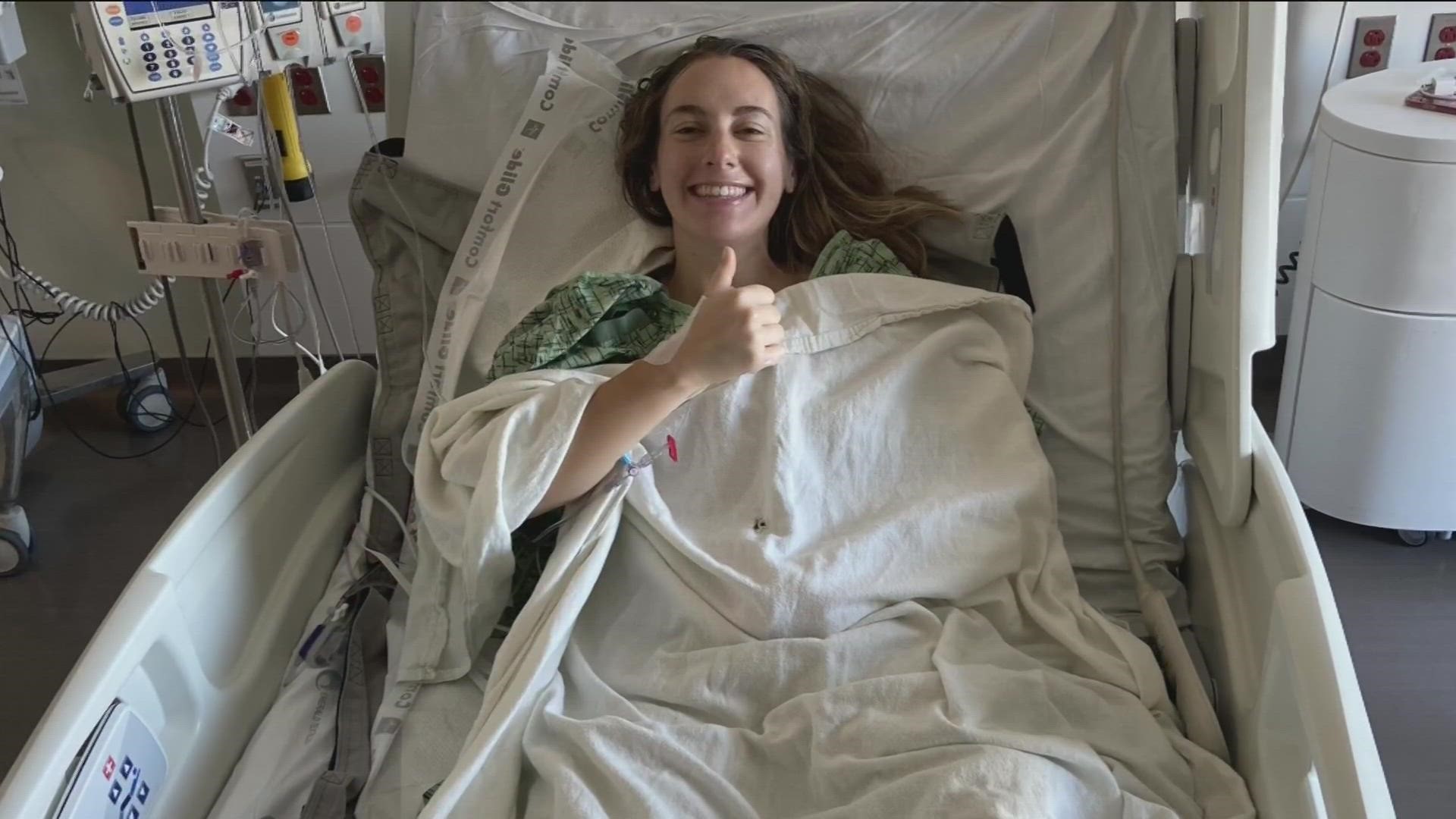SAN DIEGO — The numbers are shocking; heart disease and stroke continue to be the leading cause of death for women every year in the United States. On Friday, February 3rd, you are being urged to wear red.
During February, CBS 8 partnered with the American Heart Association to Go Red for Women. The goal is to bring awareness, so women can know their numbers and protect their health.
CBS 8’s Heather Myers had a chance to talk to a local woman who was only 27 years old when she showed signs of a stroke. Brittney Whiteman almost walked out of a health clinic before the doctor on site told her to go straight to a hospital.
“I love our time together as we start each happy day…”
With her brand-new baby boy in her arms, Brittney Whiteman, now 31, can sit back and enjoy these precious moments. The journey to get here, to be able to hold her son, has been long and challenging.
“I would go for a walk around the block during my lunch break, and I noticed I was scuffing my left foot,” Whiteman said while remembering how the symptoms began. It was during the height of COVID-19 in April of 2020 when the always athletic San Diegan noticed her left foot was dragging. A few days later, she saw her left hand was weakening.
“I was trying to apply mascara with my left hand to my eyes, and my hand was shaking,” Whiteman remembered.
Whiteman went to a walk-in sports medicine clinic and almost left when she was told the co-pay would be $300. But the doctor came out to the waiting room concerned and told Whiteman to go straight to the hospital.
“I said, well, how serious is this? And she said, do you have a friend who can drive you,” Whiteman said.
After a CAT scan and an MRI… doctors were stunned to learn that the long-time runner had a brain bleed and a stroke. Over the next week in the hospital, the use of her left side quickly deteriorated, and there was no choice but brain surgery.
“There was a lot of panic and fear of, you know, the surgery will be successful? Am I going to wake up from this? I mean, there was a lot of real fear and talking with my then-boyfriend at the time, you know what happened? What does this mean for us,” said Whiteman.
The surgery was a success, and a few days later, Whiteman was sent home, unable to walk. Her boyfriend, Scott, who was about to be deployed, helped her with even the simplest tasks.
“He bathed me; brushed my hair; changed me, tied my shoes, you know, got me dressed in the day, cooked for me, cut my food. I mean, he did absolutely everything,” Whiteman said.
When Scott left on deployment, Whiteman’s parents stepped in… and months of physical therapy began.
“We were playing scrabble, and I am trying to pick up the scrabble pieces and put them back into the bag, and it is very uncoordinated,” Brittany said while referencing the cell phone video she captured the moment.
Whiteman took a cell phone video to document her remarkable road to recovery.
Over six months, she was able to regain her strength and the use of her left side.
“By the time he (Scott) came home, I was walking; I wore these little wedges to the airport him up,” said Whiteman.
Plans were already in the works for a hike in Zion, a vacation, and ultimately, an engagement. On the couple’s wedding day, Whiteman’s goal was to wear heels and dance with her new husband.
“I had a big ballgown dress. I felt like Cinderella. My husband was in his military uniform. So truly it felt like, you know, prince charming,” Whiteman said.
It’s been a long road for Brittney and Scott. The simple tasks of going for a walk, pushing a stroller, the ability to hold her infant son, and reading him a story all mean so much more.
“I was motivated by the hope of having kids one day that, you know, I would be able to play with them and live a relatively normal life.”
The American Heart Association says there is something everyone can do to help in the fight against heart disease for men and women, learn CPR. In only 2 minutes, you can learn hands-only CPR, which can save a life.
For more information, click here, and for more information about heart disease and stroke in women, click here.
WATCH RELATED: CPR Training from the American Heart Association

